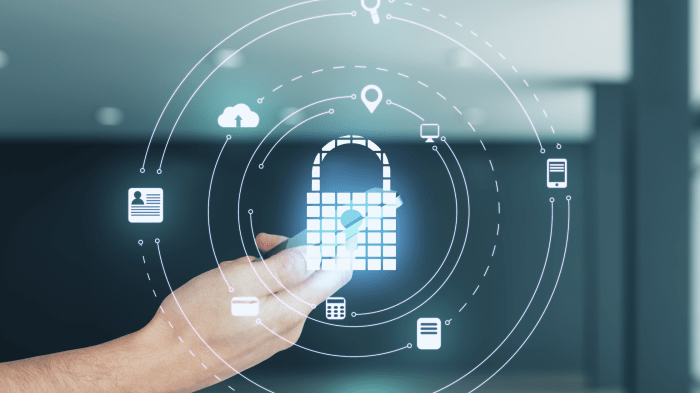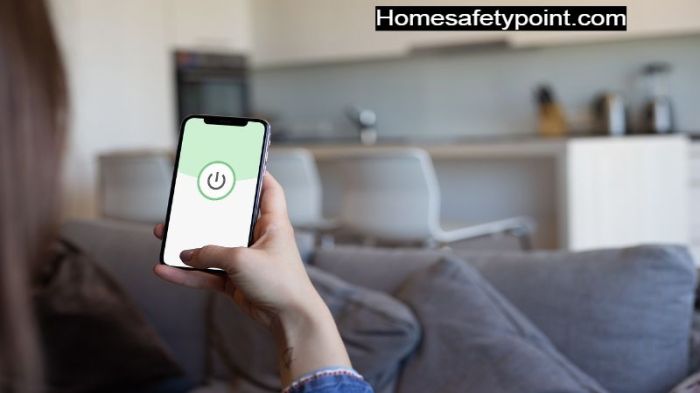In an era where smart homes are becoming increasingly prevalent, the security of our personal data is more crucial than ever. As we look towards 2025, the looming threat of hackers targeting our smart home devices raises concerns about the safety and privacy of our information.
Let's delve into the strategies and best practices to protect our smart home data from potential cyber intrusions.
Exploring the vulnerabilities and risks associated with smart home devices, we aim to provide insights on how to fortify our defenses and ensure the security of our digital lives.
Importance of Smart Home Data Security
In 2025, the importance of protecting smart home data cannot be overstated. As more devices become interconnected and integrated into our daily lives, the risk of cyber attacks and data breaches also increases.
Potential Risks Associated with Smart Home Data Breaches
- Unauthorized Access: Hackers could gain access to your smart home devices, compromising your privacy and security.
- Data Theft: Sensitive information such as personal details, financial data, and even video footage can be stolen and used for malicious purposes.
- Device Manipulation: Hackers may take control of your smart devices, such as security cameras or smart locks, putting your physical safety at risk.
- Ransomware Attacks: Cybercriminals could encrypt your smart home data and demand payment for its release, disrupting your daily routines.
Examples of Sensitive Data that Hackers Might Target in a Smart Home System
- Personal Identifiable Information (PII): Names, addresses, phone numbers, and email addresses stored in smart home devices can be exploited for identity theft.
- Financial Information: Credit card details, bank account numbers, and transaction histories are valuable targets for cybercriminals looking to commit fraud.
- Health Data: Information related to your health and wellness, such as fitness tracker data or medical device records, can be used for insurance fraud or blackmail.
- Behavioral Patterns: Data on your daily routines, preferences, and habits collected by smart home devices can be leveraged for targeted advertising or social engineering attacks.
Common Vulnerabilities in Smart Home Devices

Smart home devices have become increasingly popular, but they also come with their own set of security vulnerabilities that hackers can exploit. It is crucial to be aware of these vulnerabilities to protect your smart home data.
Outdated Software and Firmware Risks
One of the most common vulnerabilities in smart home devices is outdated software or firmware. Manufacturers often release updates to fix security flaws, but if users fail to install these updates, their devices remain vulnerable to attacks.
- Outdated software can leave devices exposed to known security vulnerabilities that hackers can easily exploit.
- Failure to update firmware can lead to unauthorized access to smart home devices, compromising sensitive data and privacy.
- Hackers can take advantage of unpatched vulnerabilities in outdated software to gain control of smart devices and manipulate them for malicious purposes.
Weak Passwords and Default Settings
Another common vulnerability in smart home devices is the use of weak passwords and default settings. Many users overlook the importance of setting strong, unique passwords and fail to change default settings, making it easier for hackers to gain unauthorized access.
- Weak passwords can be easily guessed or cracked by hackers, allowing them to infiltrate smart home devices and steal sensitive information.
- Default settings are often widely known and exploited by hackers, making it essential for users to customize settings to enhance security.
- Failure to change default passwords and settings can result in unauthorized control of smart devices, putting personal data at risk of exposure.
Lack of Encryption and Insecure Connections
Smart home devices that lack encryption and use insecure connections are also vulnerable to cyber attacks. Without proper encryption protocols, data transmitted between devices and servers can be intercepted by hackers.
- Unencrypted data transmissions can be intercepted by cybercriminals, compromising the privacy and security of smart home data.
- Insecure connections, such as unsecured Wi-Fi networks, can be exploited by hackers to gain access to smart devices and manipulate them remotely.
- Failure to secure connections between devices and networks can result in unauthorized access to sensitive information stored on smart home devices.
Best Practices for Securing Smart Home Data

In order to protect your smart home data from potential cyber threats, it is crucial to implement the following best practices:
Setting Strong Passwords
One of the most effective ways to secure smart home devices is by setting strong and unique passwords. Avoid using default passwords or easily guessable combinations. Opt for long passwords with a mix of letters, numbers, and special characters.
Regular Software and Firmware Updates
Regularly updating the software and firmware of your smart home devices is essential for enhancing security. Manufacturers often release updates to patch vulnerabilities and improve overall security. Make sure to install these updates promptly to stay protected.
Advanced Security Measures for Smart Homes

As technology advances, it becomes increasingly important to implement advanced security measures to protect smart home data from potential hackers. In this section, we will explore the role of encryption, multi-factor authentication, secure networks, and firewalls in enhancing the security of smart home systems.
Role of Encryption in Protecting Smart Home Data
Encryption plays a crucial role in safeguarding smart home data from hackers by converting sensitive information into a coded format that can only be deciphered with the appropriate decryption key. This ensures that even if hackers manage to intercept the data, they will not be able to make sense of it without the encryption key.
Benefits of Implementing Multi-Factor Authentication
Multi-factor authentication adds an extra layer of security to smart home systems by requiring users to provide more than one form of verification to access their devices or data. This could include something they know (such as a password), something they have (such as a smartphone for receiving a code), or something they are (such as a fingerprint or facial recognition).
By implementing multi-factor authentication, smart homes can significantly reduce the risk of unauthorized access.
Use of Secure Networks and Firewalls
Secure networks and firewalls are essential components in protecting smart home devices from cyber threats. Secure networks ensure that data transmitted between devices is encrypted and secure, while firewalls act as a barrier between the internal network and external threats.
By setting up a secure network and firewall, smart home owners can prevent unauthorized access and keep their data safe from potential hackers.
Summary
As we navigate the complexities of securing our smart homes in the digital landscape of 2025, it is imperative to stay vigilant and proactive in safeguarding our data. By implementing advanced security measures and staying informed about the latest threats, we can create a safer environment for our interconnected devices and protect our privacy from malicious actors.
FAQ Section
What are some common security vulnerabilities in smart home devices?
Common vulnerabilities include weak default passwords, lack of encryption, and unsecure network connections.
How can I secure my smart home devices from cyber threats?
Ensure you use strong, unique passwords, regularly update software and firmware, and enable multi-factor authentication when possible.
Why is encryption important for protecting smart home data?
Encryption scrambles data, making it unreadable to unauthorized users, enhancing the security of your smart home information.


